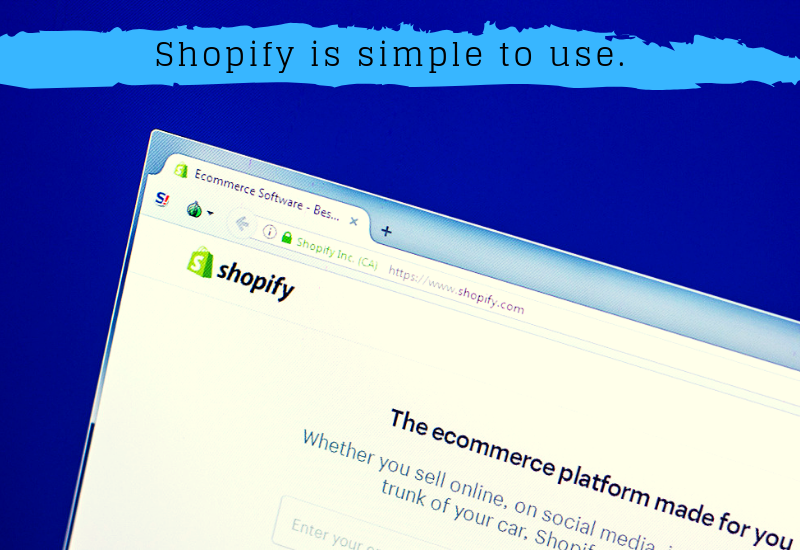Introduction
If you are an eCommerce player, you are probably familiar with Magento or Shopify. After all, these are the two most popular eCommerce platforms on the market.
Shopify and Magento are often seen as interchangeable service providers. However, they cater to different pools of eCommerce businesses. Let’s compare both and identify which one will better serve your business.
It’s head-to-head time! Shopify Vs. Magento.
The size of your organization is a primary factor in choosing between either player. Magento is ideal for fast-growing small & medium businesses with some technical prowess. On the other hand, Shopify is for small and large organizations that require access to industry-standard services in a non-technical manner.
[bctt tweet=”The size of your organization will play a major role in choosing between Shopify & Magento.” username=”LateShipment”]
Magento
- lets you control a lot of your customer experience
- keeps accommodating your business’ changes over time
- can handle customizable products and digital goods
- Is particularly helpful in handling the complexities of B2B commerce
Magento has, in the recent past, rolled out Magento 2. The difference between the original version and this one is quite significant. Magento 2 offers better APIs, a faster architecture, and advanced content staging among other features. The pricing of Magento 2 is different from legacy versions of Magento.
Magento encourages its users to progress to Magento 2 and will phase out legacy versions in the coming years.
Magento 2 is particularly great for SMBs looking to grow further. It, however, requires a dedicated team of 1–3 employees. And these employees need to be on top of their tech and business game to handle the platform.
[bctt tweet=”Magento 2 is particularly great for SMBs looking to grow further.” username=”@LateShipment”]
The number of users Shopify boasts of is significantly higher than that of Magento’s. Both large enterprises and smaller upstarts use the Shopify platform to sell their goods online. As far raw brand popularity is concerned, Shopify is well ahead of Magento and its other competitors.
Shopify
- is extremely simple to use, and this cannot be stated enough
- offers extensive themes that a user can just drag and drop to build a website
- offers straightforward pricing options

You need not have any technical knowledge to build a website on Shopify. And that works brilliantly if you do not have the means to build a site yourself.
[bctt tweet=”Shopify works brilliantly if you do not have the means to build a site yourself. ” username=”@LateShipment”]
Shopify’s pricing is straightforward, and you can start selling your goods easily.
Shopify has 3 variants: Basic Shopify, Shopify, and Advanced Shopify, which cost you $29, $79, and $299 a month respectively. Each of these offerings caters to a specific audience. They include pretty much everything an ecommerce seller would need to begin with.
Shopify has Shopify Plus now.
Shopify Plus has higher-level tools and more features than Shopify. It is particularly helpful in scaling your business. If you run a small- or medium-sized company and now have to run with the big dogs, you need Shopify Plus.
Shopify Plus lets you customise product pages and payment-processing features. In general, Shopify doesn’t require coding skills from your end. The same holds true for Shopify Plus.
[bctt tweet=”Setting up a store on Shopify doesn’t require any coding knowledge.” username=”@LateShipment”]
Shopify Plus integrates with a large number of platforms like Facebook, Facebook Messenger, Instagram, Kik, and Amazon. What’s more, Shopify Plus has lower transaction fees and has better support than regular Shopify.
Comparing Magento & Shopify

Now, let’s look at some specific parameters that will help you decide which of the two platforms is right for your business.
Cost of setup & operational expenses
Magento provides Magento Open Source (free) and Magento Commerce. The Magento Open Source platform starts at, wait-for-it, $0.00. On the other hand, Shopify offers a free trial for 14 days after which you have to become a paid member.
If you want to build a website from scratch, that’s where the differences start becoming evident. If you are savvy enough to build your own site on Magento, go for it. Professional Magento agencies can do that for you, but that is going to set you back by $2,500–$10,000 if you choose a website development company in Asia and at least $15,000 for a company in the US or UK.
Shopify has no set-up fee. It lets you start off with a monthly plan and build your website all by yourself. It provides a drag and drop website builder tool for the purpose.
It’s easy enough even if you aren’t tech savvy.
But does this mean all Shopify sites look all the same? Not at all. Shopify provides enough scope to add your own elements to your site.
At the end of the day, Shopify is pretty much a no-brainer for small companies. On the other hand, medium-to-large eCommerce stores typically choose Magento with an eye on customizability in the long term.
When it comes to operational costs, Shopify charges users according to monthly plans: $29, $79, or $299 per month depending on the plan you choose. Web hosting is included in each of these plans.
Magento 2 has no monthly fee, but the hosting fee ranges from $3–100 /month based on your requirement.
Shopify charges 2%, 1%, or 0.5% per sale (transaction fees) on non-native payment gateways like PayPal, Braintree, and Authorize.net.
Keep in mind though that when you have an online store, it’s prudent to facilitate non-native payment gateways. People are more likely to use other payment gateways than Shopify’s.
When you have a sale with the Basic Shopify package, for every $100, you pay Shopify $2. This doesn’t sound like much. But when you make $100,000 a year, Shopify takes $2000!
Magento 2 does not charge extra if your end users choose external payment gateways. It integrates well with PayPal, Braintree, and Authorize.net.
[bctt tweet=”Magento 2 integrates well with PayPal, Braintree, and Authorize.net.” username=”@LateShipment”]
Ease-of-use
In the longer run, ease of use is not just about building a website. That is a one-time activity. Both Magento 2 and Shopify provide user-friendly and easy-to-use management dashboards. You can manage products, customers, orders, and CMS pages and create sales reports from these dashboards.
These dashboards are easily comprehensible to both tech savvy and non-tech-savvy people. So, ease-of-use while operating is not a problem in either Magento 2 or Shopify.
Security
Malware attacks cost retail businesses millions of dollars in lost revenue each year. For this reason, cyber security is extremely important to both small and large companies.
Shopify is closed-source and offers good security. The centralization largely ensures the integrity of the framework. Furthermore, Shopify has a dedicated security team and is PCI DSS compliant. Consequently, the security of your customer’s credit card information is ensured.
[bctt tweet=”Shopify has a dedicated security team and is PCI DSS compliant. ” username=”@LateShipment”]
Improperly secured Magento sites are commonly targeted in malware attacks, so if you decide to use Magento, you need to take measures to ensure the security of your store. This means an additional cost for security. If you use Magento 2, the security features are better, but do invest in additional security to be absolutely sure. Here are a few best practices you can follow when using a Magento site:
- Choose a hosting provider that offers bank-grade security.
- Install all the recommended updates.
- Have risk management plans in place.
- If you are not very tech savvy, utilize the services of a trusted third party to ensure site security.
Functionality
The basic functionalities required to run your store are available on both Shopify and Magento.
By default, Magento 2 allows you to generate as many discount and coupon codes as you need. Shopify doesn’t include this feature in its basic plan. Magento lets you control infinite inventory, while Shopify Basic allows only a 25-item-strong inventory.
[bctt tweet=”Magento 2 allows you to generate as many discount and coupon codes as you need.” username=””]
Shipping methods and calculations are offered on either platform. Magento has language packs that let you install several languages at once while Shopify requires another application to handle multiple languages. Shopify Blogspace is free while Magento charges you for the same.
Magento 2 is notable in that it offers SEO and marketing enhancements with meta tags, meta titles, meta keywords, URL keys, alt text, etc.
Speed & performance
No customer wants to shop at a site that takes forever to load. Speed is critical to today’s eCommerce operations. Your conversion rate will dip significantly if you make your customers wait. Seconds matter in the eCommerce game.
Shopify is reliable with speed and performance. The speed of a Magento site depends on various factors: the most important among these factors is the hosting service you choose.
Scalability
When you are a small organization, you may be driven to think that scalability is a secondary vision thought. Wrong!!!! You may start small, but always ensure scope for scalability.
With Shopify, you can purchase a bigger package with the ease of point-and-click scaling. You needn’t worry about architecture and hosting solutions. Shopify takes care of all that.
While traditional Magento has no set up cost or monthly fee, the moment you scale, you will have to resolve architecture and hosting requirements.
Modules & plugins supported
Magento 2 and Shopify give you almost everything you need to go online. But that’s seldom enough. Every e-commerce business on these platforms needs third-party extensions to enhance website performance and functionality.
Shopify has 2,300 apps on its store while Magento 2 has over 3000. These apps enable store improvements and enhancements for accounting & finance, marketing, content & customization, customer support, payment & security, reporting & analytics, and everything that an e-commerce seller needs.
Both Magento and Shopify have a host of plugins and modules for customers to pick from. The Magento Marketplace offers over 4,500 different add-ons and extensions that can be downloaded to improve your store’s functionality.
Conclusion
Shopify Vs. Magento is a perennial debate. But the conclusion couldn’t be clearer: it depends on the nature of your business. One is not better than the other. Both are meant for different types of customers. What works for a peer may not necessarily work for your business.
Decide depending on the size of your business, costs involved, your capabilities, requirements, and your end users’ preferences.
Choose between Shopify & Magento depending on the size of your business, costs involved, your capabilities, requirements, and your end users’ preferences.
In a nutshell, if you are a tech savvy, new-age entrepreneur with a small team of resourceful personnel with diverse skill sets, choose Magento. If you are looking for a quality product that requires minimal intervention, choose Shopify. Similarly, if you want to build an online store with a small number of products and within a short period of time, Shopify is what you need. If you want to implement a variety of features with customization being a priority, Magento is your best choice.








